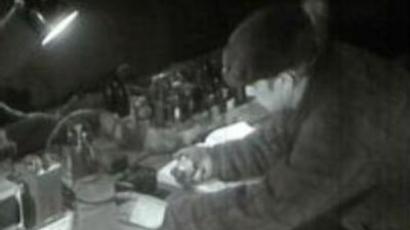Soviet atomic bomb – 60 years on
Sixty years ago, the USSR tested its first atomic bomb. Now the proving ground stands as a reminder of the ambitious project that turned Russia into a major nuclear force.
The town of Kurchatov in northern Kazakhstan used to be one of USSR’s most secretive places. Named after Soviet nuclear scientist Igor Kurchatov, it was home to those who worked at the nearby Semipalatinsk test site, where sixty years ago the first Soviet nuclear bomb was detonated.
Mikhail Kvasov is the only person still alive who took part in the first Soviet test.
“None of those present had ever seen anything like it. We were stunned. After the explosion we remained shocked for a long time,” he said.
Up until 1989, Semipalatinsk was the scene of some 500 more nuclear tests. Vasily Masnyov and his wife, living nearby, witnessed the explosions.
“When a test took place, usually at 8 in the morning, we felt how the earth shook and vibrated under our feet. If dogs or cats happened to be outside, they would run for cover,” Vasily said.
Scientists say there is little radioactivity left here, but some areas are still contaminated.
“Most of the time it is slag which melted during an explosion that is the source of radiation. But in some places where a radioactive cloud rained on the ground, the soil may be contaminated as well,” said radiation expert Artyom Shakhmenev. “Usually the radiation is deep underground by now.”
Although Soviet nuclear scientists started their research several years before World War II, the atomic bomb project was a low priority. But in the summer of 1945, the US tested its first nuclear bomb. Days later, two were dropped on the Japanese cities Hiroshima and Nagasaki. Stalin was spurred into action.
One of the central figures in the Soviet nuclear program was Igor Kurchatov, known as the Father of the Soviet atomic bomb. Stalin’s orders to him were clear – a bomb had to be produced by 1948.
But after the war, there was an acute shortage of equipment for producing nuclear weapons.
“Kurchatov swore to himself that he would create the bomb and wouldn’t shave until he succeeded. So he was nicknamed the Beard. But even after the bomb was created he decided to keep his trademark,” said historian Anatoly Utkin.
The Soviet atomic project benefited from successful espionage efforts. The USSR’s intelligence had informers among Western scientists, who supplied key information about the US program, speeding up Kurchatov’s work. A year after Stalin's deadline, Moscow reached nuclear parity with Washington.
In 1991, as the Soviet Union neared its end, the Semipalatinsk site was closed. The town of Kurchatov is now almost deserted, but continues to stand as a reminder of the historic events of sixty years ago.













